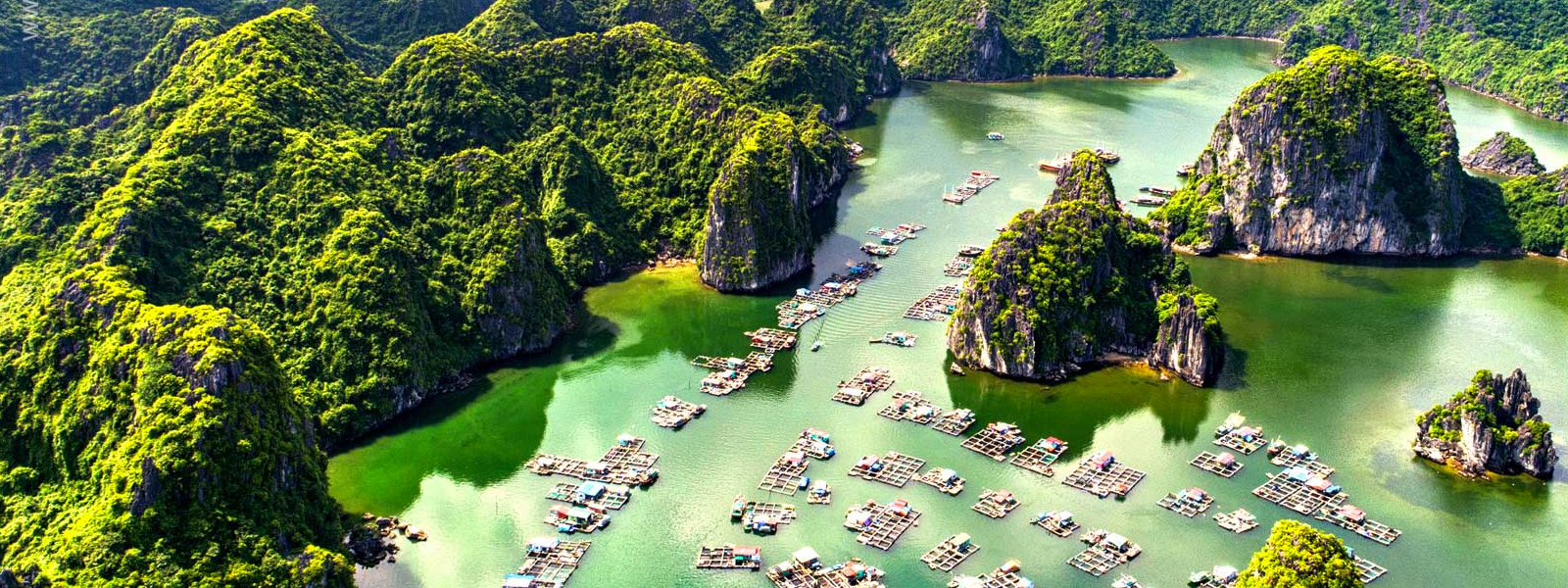What is Mangrove Forest?
Mangrove forest is forest areas composed of many mangrove trees that live in coastal saline waters in the tropics and subtropical regions where other plants are difficult to grow. Most of these areas are exposed when the tide is low and flooded when the tide rises. Due to these harsh conditions, only some mangrove trees with their characteristics can be adapted.
Exploring the mangrove forest of Phu Long will give visitors a new exciting journey and an actual observation of biodiversity, specific fauna and flora of the mangrove ecosystem.
How to Get to Phu Long Mangroves and Ao Coi Otter valley ?
In calculating the distance from Hanoi to Phu Long mangroves, the distance from Hanoi to Phu Long is about 160km. Therefore, it is quite easy and quick to set a trip to Phu Long mangroves as an addition to your trip in Hanoi
Visitors can buy tickets for transportation of Hoang Long transport company from Hanoi to Phu Long. The company will pick you up at Hanoi old quarter to Cai Vieng wharf (Phu Long commune, Cat Ba island). The total schedule will be around 02h:30 hours.
Best Things to Do & See in Phu Long Mangroves
To explore Phu Long mangroves, you will have to take a boat from Cai Vieng wharf along Cai Vieng River and through several limestone mountains, shrimp, crab and fish ponds of the local fishermen.
Thien Long Cave
It takes about 25 minutes to reach the trail through the mangroves leading to the Thien Long cave. Along the entrance to the cave is a forest of Rhizophora, acacia and many species of endemism that can grow well and fast in the mangrove forest.
The mysterious Thien Long Cave is the place where ancient bones are kept that has been discovered by the archaeologists. It is also one of the most beautiful caves in the archipelago. Large and high cave with many stalactites and stalagmites makes visitors associate with the amazing beauty of natural art sculptures.
Why It’s Special
-
Its blend of geology + mystery + culture sets it apart: you don’t just walk through a cave, you enter a space evocative of a “heavenly maze” or mythic realm.
-
It’s less crowded than some big tourist sites (though becoming more visited) — this gives you a more ‘discovery’ feel.
-
The way different chambers feel distinct (from intimate to grand) gives the experience variety: you climb, hike, wander, look up, and reflect.
Location & Access
-
The cave is located in Phu Long Commune, Cat Hai District, on Cat Ba Island, Vietnam.
-
Reaching it typically involves traveling from Cat Ba town and then entering via a boat through mangrove canals (in some tours) and then walking into the cave.
The Setting & Atmosphere
-
Upon entering the cave you pass through a narrow, rugged entrance that leads into a large interior space. The transition from outside into the cave creates a feeling of stepping into a different world.
-
Inside the cave the ceilings are low (around 1.5–2.1 m in parts) but the space opens up into larger chambers.
The cave is divided into three main parts or chambers:
-
First chamber: Features rock-pillars, drooping stalactites, and rock-roof structures.
-
Second chamber: More expansive, with wide arches, curved stalactite formations, shapes you might interpret as animals or mythical forms; light filtering in gives silver/golden reflections.
-
Third chamber: Only reached after climbing over a turtle-shaped rock formation; this part is split into two zones: one called the “Divine Palace” and the other the “Buddhist Temple” zone, with stalactites forming shapes reminiscent of shrines, dragons, thrones, statues of deities.
Natural Formations & Highlights
-
The cave holds millions of years of geological history: stalactites, stalagmites, rock pillars, arches and cave ‘rooms’ shaped by nature over vast time spans.
-
Many formations invite imaginative interpretation — e.g., a turtle-shaped rock you climb over, stalactites that resemble trees or mythical creatures.
-
The interplay of natural light, shadows and artificial lighting inside amplifies the mystical feeling.
Historical & Cultural Aspects
-
The cave bears legends: for example, local folklore suggests it was once used as a refuge by pirates, or inhabited by sacred dragons.
-
Archaeological finds: it also contains traces of ancient human life (bones etc) hidden within.
Tips for Visiting
-
Best time: The cave is suitable to visit year around, but better when weather is cooler and drier.
-
Wear good footwear: the path inside may be uneven, slippery. Bring a thin jacket—the cave can be cool.
-
Consider guided tours: For the full story (legends plus geology) and to access beyond just the main chamber.
-
Bring a flashlight/camera: Some parts may be dimly lit and the formations really benefit from good light.
Ao Coi Otter Valley
This is green and peaceful valley surrounded by lush tropical jungles and mangrove forests. There are lots of trekking routes from here to explore Catba's flora and fauna, please contact us for more outdoor adventures. Catba island is real place for nature lovers
Mr. Thanh’s Lagoon
From Thien Long cave, tourists go on a boat for about 10 minutes to reach Mr. Thanh’s lagoon. This lagoon is called as Mr. Thanh’s lagoon because there is a house hidden deep in the cliffs, where Mr. Thanh and his family have lived for decades for cultivating seafood, embanking dykes, planting trees and mangrove forests that contribute to the creation of Phu Long mangroves now. Therefore, tourists will have a chance to explore and observe the life of local people.
Phu Long Fishing Port & Market
On the way back, tourists will take a journey through a great number of lagoons, mangrove forests, rock island to the fishing port and Phu Long market where there is a small village, several restaurants, and a community ecotourism center organized by the locals. There are full of services from restaurants, internet cafés, motels with many attractive activities such as campfire, cultural exchanges…
Phu Long Ancient Village
If you have time you can walk from Mr. Thanh’s lagoon across a ridge to Ang Dai. In Ang Dai, there is an ancient village called Phu Long, which was once inhabited by indigenous people. In the present, the village has only an old shrine, garden trees, and ancient tombs.
For more tours in Lan Ha bay and Halong, please contact us via WhatsApp: + 84 912 555 208 and check out:
https://www.blueswimmeradventures.com/cruise-packages/01-day-on-indochine-classic-in-lan-ha-bay/





